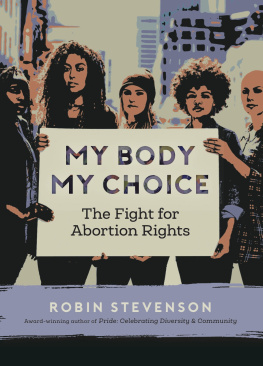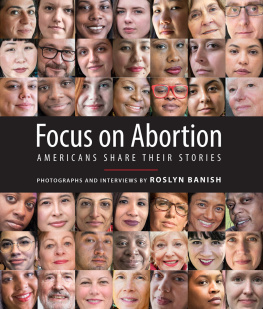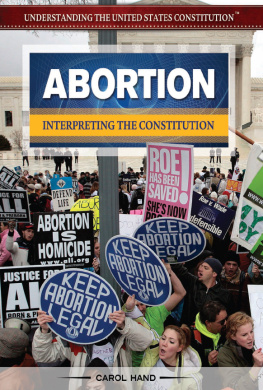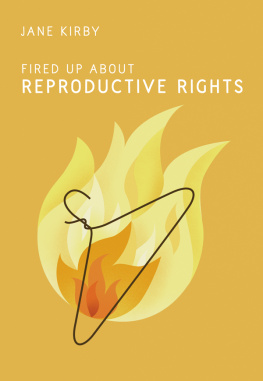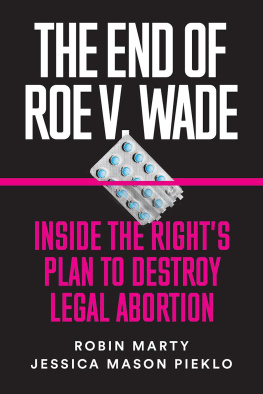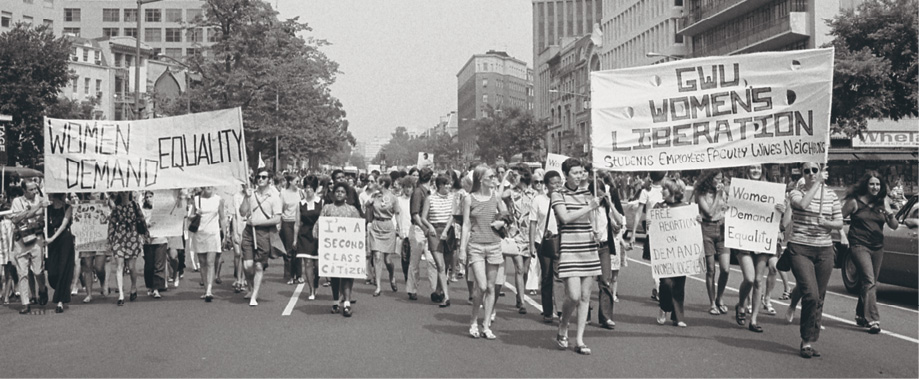During the 1970 Womens Strike for Equality, tens of thousands of feminists marched through the streets of New York and gathered at many more organized demonstrations across the countrylike this one in Washington, DC. One of their goals was free abortion on demand.
Over the last fifty years people who support abortion rights have been fighting hard to create a world in which access to safe and legal abortions is guaranteed. Opposition has been intense and sometimes violent. Victories have been hard won, and womens right to control their own bodies remains under threat. All around the world people are speaking out about abortion, breaking the silence and shattering taboos. They are working to educate others and lobbying their governments. They are raising money to help those who cant afford abortions, and they are harnessing the power of the Internet to help people get safe abortions in countries where abortion is a crime.
In this book you will meet all kinds of activists. The women who drove across Canada in the 1970 Abortion Caravan. The feminists in Chicago who taught themselves to do safe abortions during the illegal-abortion era. The women who use a boat to provide abortions in international waters. Community groups using crowdfunding to open abortion clinics, and students building websites to help people access abortion services. Doctors who put their lives on the line to provide abortions despite daily harassment and threats of violence. Young reproductive rights advocates all over the world who educate others, lobby for change and help people who are facing unwanted pregnancies.
The long fight for abortion rights is being picked up by a new generation of courageous, creative and passionate activists. This book is about the historyand the futureof that fight.
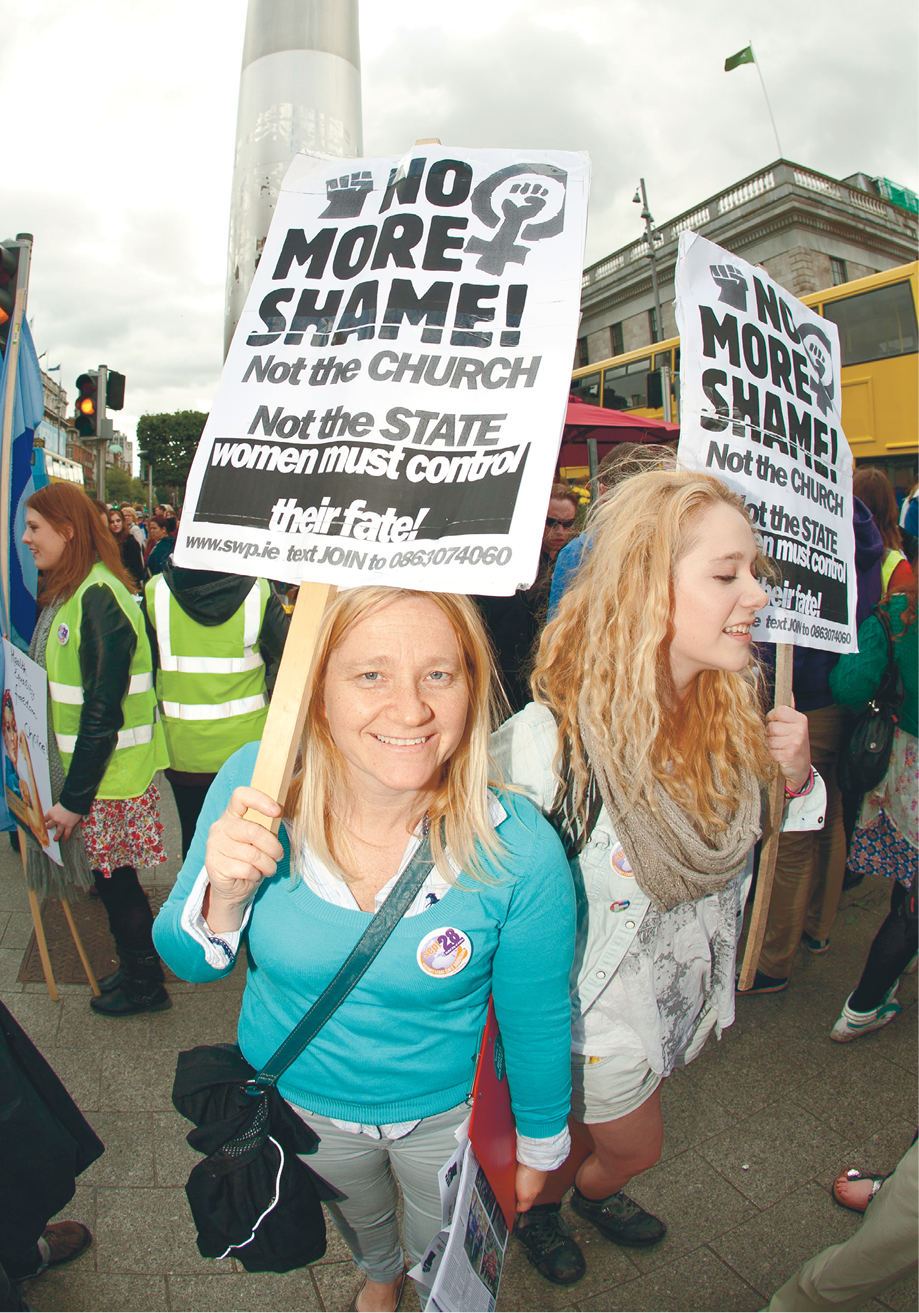
The March for Choice in Dublin, Ireland, in 2012.
What Is an Abortion?
A spontaneous abortion, or miscarriage, is when a pregnancy ends naturally before the fetus has developed enough to survive. This happens in about 10 to 25 percent of all pregnancies. When people speak about abortion, they generally mean induced abortion, which is when a pregnancy is ended deliberately. In this book, the word abortion refers to induced abortions. The vast majorityaround 90 percentof these abortions occur during the first trimester (first twelve weeks) of pregnancy.
There are two ways of ending a pregnancy: surgical abortion and medical abortion. In Canada and the United States, both procedures are common and safe.
Surgical abortion
The majority of abortions in North America are surgical abortions, provided in medical clinics or hospitals. The most common type of surgical abortion occurs in the first trimester of pregnancy and is known as suction abortion, or vacuum aspiration. In this procedure, the patients cervix is dilated, and a thin straw called a cannula is inserted. The cannula is attached to a tube, and gentle suction is used to empty the contents of the uterus (or womb). The whole procedure takes less than five minutes.
Another procedure is called dilation and evacuation, or D and E. Its generally used for abortions a little later in pregnancy, and it uses both suction and medical instruments to empty the uterus. This takes a little longerup to fifteen minutes.
During both types of procedure, most patients experience some cramping, similar to menstrual cramps and varying from mild to more severe. They receive pain medication and sometimes sedation to help them relax, and they can usually return to normal activities the next day.
Medical Abortion

Abortion pills are a safe and effective way of ending a pregnancy.
In the United States, about 20 percent of abortions involve not surgery, but pills. In some countries, the majority of abortions are done this way. This type of abortion is called a medication, or medical, abortion. It uses a combination of prescription drugs to end the pregnancy. These drugs are mifepristone and misoprostol, but the pairing of them is often just referred to as the abortion pill. The abortion pill is also known as RU-486, and in Canada it is sold as Mifegymiso. (Abortion pills are different from emergency contraception, also called the morning-after pill, or plan B, which prevents pregnancy.)
In the first ten weeks of pregnancy, medical abortion offers an alternative to surgical abortion. The pills induce an abortion similar to a natural miscarriage, causing cramping and bleeding to empty the uteruslike a very heavy period that lasts from several hours to a couple of days. The abortion can happen at home, with over-the-counter pain medication to manage the discomfort of the cramping. Just as with a surgical abortion, most people are able to return to normal activities the next day. Studies show that medical abortion is a safe and effective alternative to surgical abortion.

These reproductive rights advocates from the National Network of Abortion Funds have an important message: Because abortion is so common, we all know and care about people who have had abortions...whether we are aware of it or not.
Who Has Abortions?
Many people have abortions: around the world there are well over 50 million abortions every year. In Canada about 40 percent of all pregnancies are unplanned. Roughly half of these pregnancies are carried to term, and the other half are terminated. In the United States about a million abortions are performed every year. There, around 12 percent of abortion patients are in their teens. In Canada about half are under age twenty-five. Many people who have abortions already have at least one child. Nearly half are living with a male partner, and more than half were using a method of

